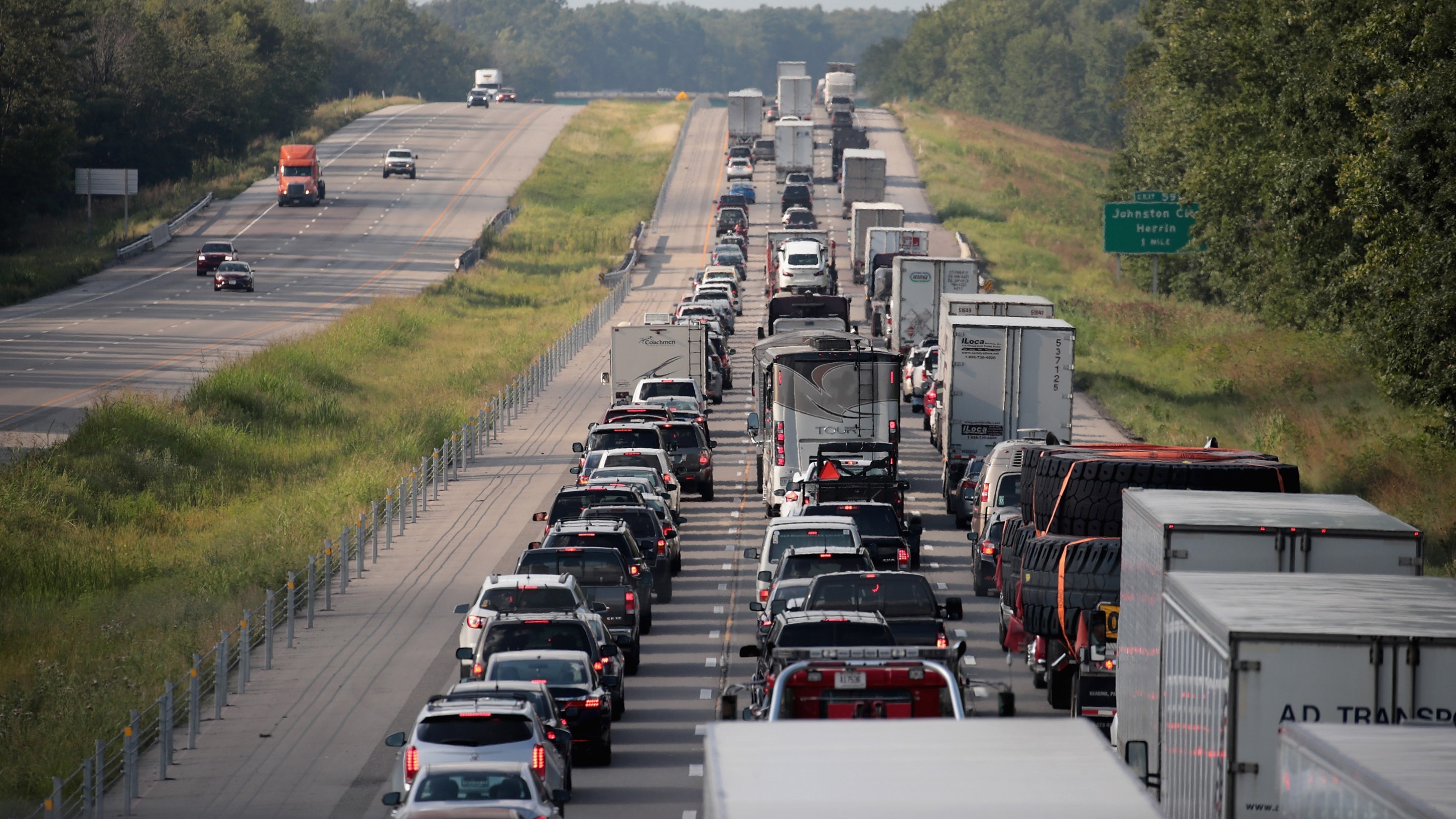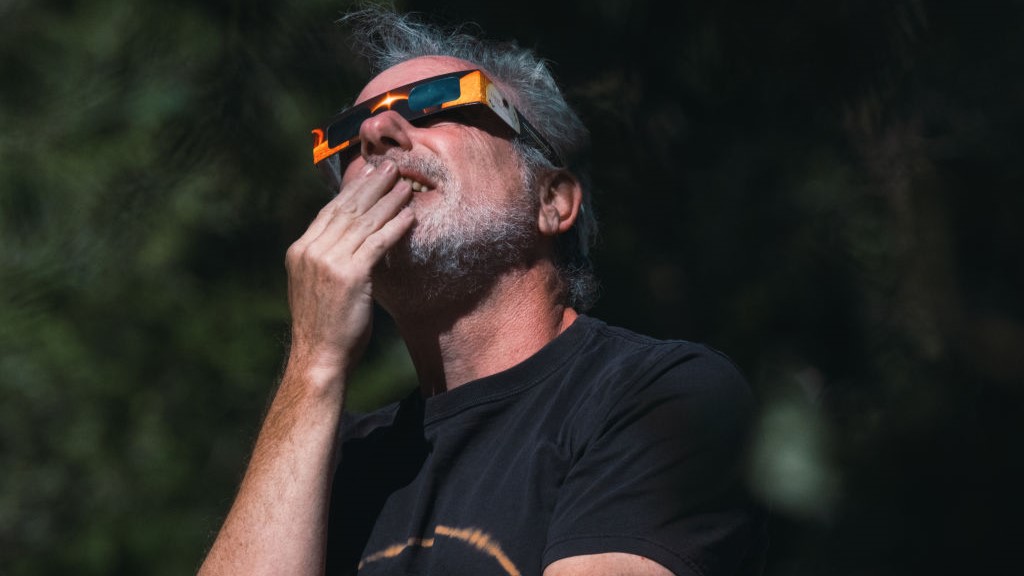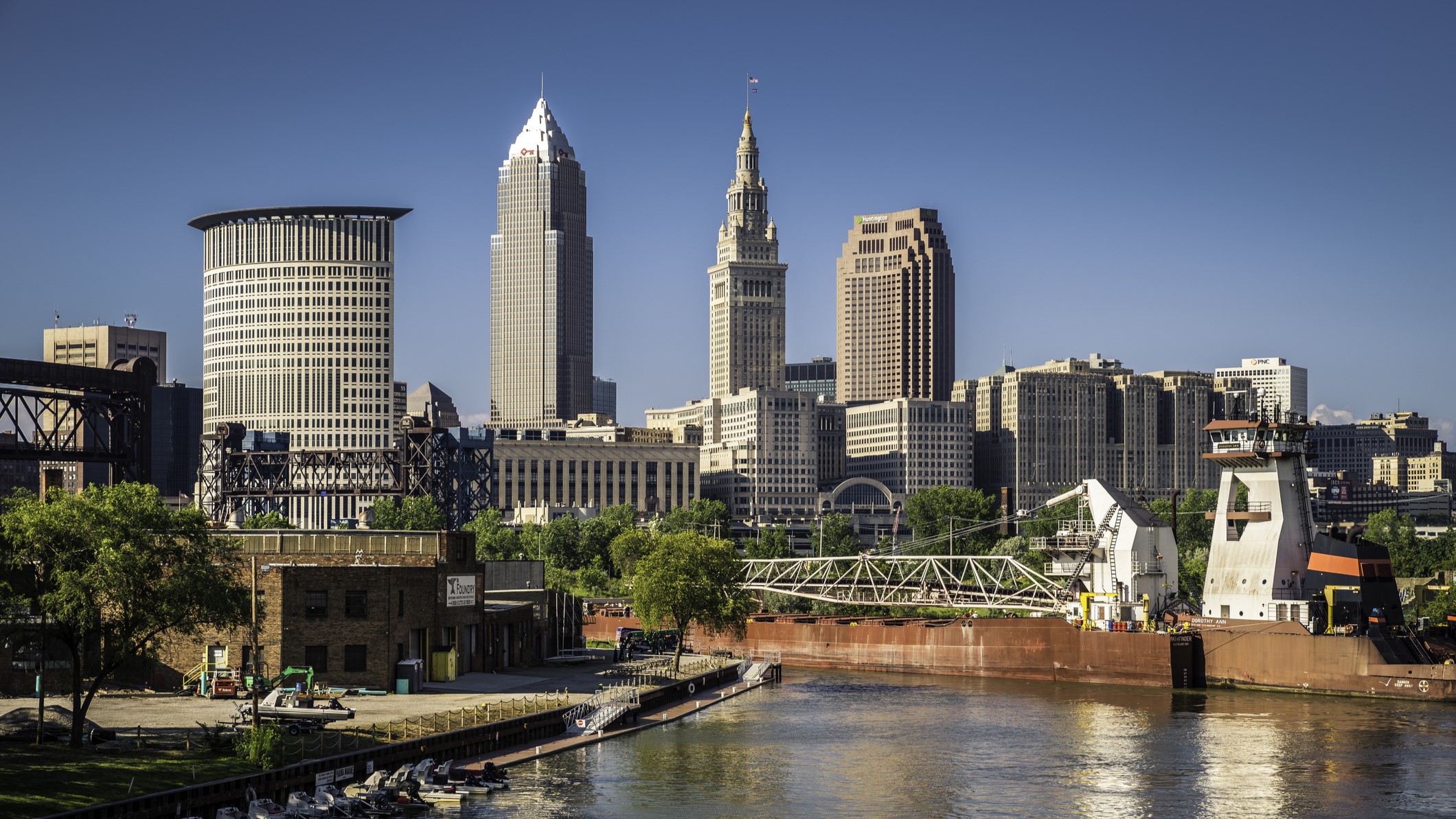Solar eclipse jam: How to avoid getting stuck in traffic on April 8, 2024
Expect a traffic jam for the ages on eclipse day — and plan ahead to avoid it.

Buckle up — there's a total solar eclipse coming on April 8 — and everyone will be talking about traffic.
Many who traveled into and within the path of totality last time around on August 21, 2017, will recall the long and tedious traffic jams on the way home after the eclipse.
The total solar eclipse on April 8, will traverse North America from Mexico to Canada via the U.S. Although another one happened less than seven years ago, this one is longer in duration, has a wider path of totality, and occurs over or close to many major cities. It will also happen in a part of the world where millions of people have either experienced or heard eyewitness accounts of how spectacular totality is. The potential is for millions of visitors to flock to the path of totality, defying predictions.
Related: How will the 2024 total solar eclipse differ from the 2017 total solar eclipse?
Complicating matters will be the uncertain weather prospects, which are more likely to mean cloudy skies in April than in August. Will that put people off? Or merely add to traffic in the hours before the eclipse? A massive influx of visitors into rural areas could cause issues, clogging highways and parking lots, and you'll need to prepare accordingly to avoid the eclipse jam.
Here's how to avoid getting stuck in traffic on April 8.
1. Sacrifice duration
If you're lucky enough to live inside the path of totality on April 8, there's a great argument for simply staying home and watching it in your backyard. Most globe-trotting eclipse-chasers would give their right eye for such a chance.
Breaking space news, the latest updates on rocket launches, skywatching events and more!
However, it likely comes with the fact that unless you live on the centerline, you won't experience totality for as long as you could if you drive to another location. Resist that temptation, relax and stay home. Even if you're close to the path's edge, you'll likely experience totality for a minute or two. For context, the last total solar eclipse occurred in Australia, Timor Leste and Indonesia on April 20, 2023. It lasted for between 58 seconds and 1 minute 16 seconds. "Put it this way — if you stay in your backyard and get one or two minutes in totality, it will be a peak life experience and you will never forget it," Michael Zeiler, eclipse cartographer at GreatAmericanEclipse.com told Space.com.
2. Stay overnight after the eclipse
The best way to beat the traffic is not to join it.
If you arrive at the location in the path of totality on April 7 and book a couple of nights' accommodation, you can leave on April 9 and not experience any of the madness on the roads. If you're lucky enough to live in the path, but you're hosting friends and family for the eclipse, encourage them to stay over on April 8 instead of sitting in traffic after the eclipse.
3. Stay put after totality
All of that buildup, and then suddenly, it's all over, and everybody leaves. A total solar eclipse is the event's climax, but either side is a partial solar eclipse lasting about 80 minutes on April 8. Sure, the moment of totality may have passed, but staying where you are to watch the entire event go into reverse after totality is worth doing for more reasons than simply paying respects to the moon.
Put it this way, you can either watch the partial eclipse, or you can sit in traffic. With so many people heading off home, there's no way you are going to beat the traffic by leaving seconds after totality. That said, if you are going to wait around after totality, you may as well do so for at least a few hours.
4. Use real-time traffic reports
Whether you leave right after totality or a few hours later, using a navigation app on your smartphone makes sense to let you know how bad the traffic is. You could even let it dictate when you leave. In the Google Maps app, press the layers button in the top-right and choose the traffic option in the map details section. It will guide you home the quickest way, likely avoiding major highways, though when heading home, be sure to have plenty of water and snacks in your vehicle just in case you get stuck.
5. Do the opposite to everyone else
By now it will be tricky to book a hotel in the path of totality, especially if you plan to go to Texas. However, a judicially planned road trip that has you come into the path from a different angle to everyone else will mean you can visit the path just for the eclipse and then get on with your road trip. For example, Texas Hill Country is the place everyone's talking about. It has the best chance of clear skies in the U.S., according to climate statistics, and it's where many major events are being planned. Kerrville is predicted to have as many as half a million visitors on April 8, largely because it's on Interstate 10 from San Antonio.
However, look at the map of the path in this area, and you'll notice that San Antonio (and nearby Austin) are south of the centerline. So plan a road trip that has you visit west or north of there, which won't be anywhere near as jammed. While Kerrville will be extremely busy, the likes of Rocksprings, Junction, Brady and Uvalde will be far less visited.
6. Stay in a city
This is one of the most urban total solar eclipses ever. The 115 miles (185 kilometers) wide, 10,000 miles (16,000 km) long path of totality on April 8 crosses a ton of cities, including Mazatlan, Durango, and Torreón in Mexico, Austin, San Antonio, and Dallas in Texas, Little Rock in Arkansas, Indianapolis in Indiana, Cleveland in Ohio, and Buffalo and Rochester in New York. Find a hotel in any of them and stay over on April 7 and 8, and you'll not encounter any traffic. Best of all, you can walk out of your hotel on the big day and experience the eclipse without worrying about traffic.
Related: Total solar eclipse April 2024: 10 of the biggest cities within in the path of totality
7. Use public transport
Even if you cannot find a hotel in a city on the path, the likes of Houston, St Louis, Cincinnati, Detroit, Chicago and Pittsburgh are close or within easy bus/train distance. To save on time and costs, take a night bus (Busbud is handy) between where you live and one of these cities. If you'd rather take the train, one example is Amtrak's Empire Service, which runs daily between New York City to Rochester, Buffalo and Niagara Falls, all of which are in the path of totality, though you would need a hotel on either side. There are also a few scenic rides on April 8, such as Adirondack Railroad's The Eclipse Train, a 5.5-hour round trip from Utica to a viewing area near Old Forge, New York for a 2-minute 50-second totality.

Jamie is an experienced science, technology and travel journalist and stargazer who writes about exploring the night sky, solar and lunar eclipses, moon-gazing, astro-travel, astronomy and space exploration. He is the editor of WhenIsTheNextEclipse.com and author of A Stargazing Program For Beginners, and is a senior contributor at Forbes. His special skill is turning tech-babble into plain English.


